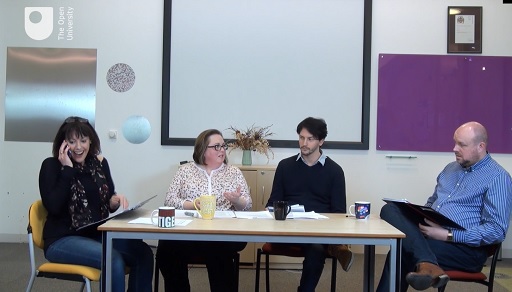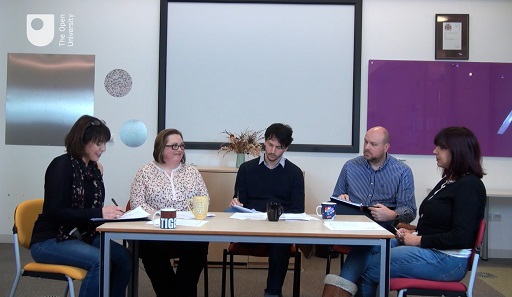3.3 How to have a good discussion
Discussions can go wrong quite easily. Some people talk too much, while others struggle to get their points across. Often there is not enough time given to sharing facts and information so that everyone understands what is under discussion. There are no clear decisions and the discussion seems to go round in circles.
Here are is a summary of common reasons why discussions go wrong:
- The purpose of the discussion is not explained clearly.
- People are not introduced to each other.
- People are not sure why they are there.
- Key people have not been invited.
- Some people do all the talking.
- Some people do not say anything and should do.
- Information is not clear.
- No one asks any questions.
- Too much time is spent on irrelevant items.
- There are too many disruptions, such as phone calls.
- Important items are left out.
- Decisions made are not clear.
- No decisions are made.
Activity 13 When a discussion goes wrong
Watch the video below in which a group of people discuss an issue that has arisen in their village. List the things that make the discussion go badly. You may find it useful to refer to the list above for guidance.
You may also find it useful to pause the video as you go along, so that you can write down your ideas.

Transcript
Discussion
Here are some of the things that you may have noticed about the discussion:
- Its purpose was not explained. One participant at least had no idea why he was there.
- Participants’ comments were not always treated respectfully. (’Duh! … Honestly, what a question!’)
- People were not introduced to each other at the beginning, so not everyone knew each other or why the others were there.
- Questions and opinions were dismissed by the chair, for example when she said, ‘The Parish Council never have the information … look it up online.’
- One person – the chair – seemed to dominate the discussion: ‘Anyway, I’ve a few ideas as to what we can do.’
- Someone who would have been helpful to the discussion was not invited (Miriam from the Parish Council).
- Time was taken up talking about something quite irrelevant (the maple tree).
- Only at the end did one of the participants have the chance to make a suggestion, as the chair dominated the discussion so much. Even then, he didn’t manage to say anything as he was interrupted by her mobile phone.
- The discussion was disrupted by the chair’s mobile going off and her answering it.
- It was unclear at the end what decisions had been made and who was going to carry out the suggestions that had been made. It felt unlikely that anything would actually be done following the discussion.
- All the participants other than the chair looked unhappy by the end of the discussion. They may have gone away and immediately organised another meeting because the discussion had been so unhelpful!
In the discussion you have just watched, the chair didn’t help the discussion go well. She didn’t make sure that everyone knew each other or understood the purpose of the meeting. She didn’t ensure that everyone had a chance to speak.
Note that some groups prefer to work less formally, without a chair. They create a set of ground rules about how discussions should be managed. Everyone is asked to agree to these beforehand.
In the next video, you can see how a chair can help a discussion run smoothly.
Activity 14 When a discussion goes well
Now watch the video below. The discussion is on the same topic. As you watch, make a note of the things that make it go rather better than the discussion in the previous activity. Why does this discussion go well?
Again, you may find it useful to pause the video while you write down your ideas.

Transcript
Discussion
- People introduced themselves so everyone knew each other and why they were there before the discussion started.
- The purpose of the meeting was made clear right at the beginning.
- Relevant people with useful contributions to make, such as Miriam from the Parish Council, were present. She had already done some research on the issue, which was helpful.
- During the discussion, the chair asked if anyone had any questions; she made sure everyone understood what was going on.
- The chair invited suggestions from all the participants, including from someone who had been quiet. She didn’t dominate the discussion, but kept it moving and made sure everyone participated.
- The chair made it clear who had to do what and at the end summarised all the decisions and actions. It felt as if something really was going to happen after the discussion!
In this section you have looked at:
- how to prepare for a discussion
- how to move a discussion along
- why a discussion can go wrong
- the things that make a discussion go well.
